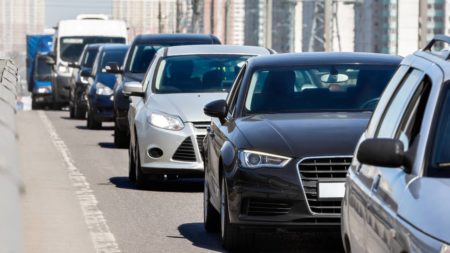14 July 2020
By Bryan Smyth
bryan@TheCork,ie
In an independent study produced by sat-nav manufacturer TomTom, Cork was recently ranked the 75th most-congested city in the world and holds the distinction of having worse urban congestion than Hong Kong, Sydney or Berlin.
The awards don’t end there. Somewhat surprisingly, in terms of size, Cork was rated 13th most congested city in the world – sobering reading for those workers who have no choice but to commute into the city every day.
Like so many other conurbations around the world, Cork faces a stark dilemma between encouraging growth and providing an adequate transport network in and around the city. While there are no easy answers, and congestion is a growing problem around the world, several new technologies may hold optimism for the future.
E-bikes and scooters
One of the significant boundaries to cycling in the area is Cork’s relatively hilly topography. The roads in and around the city are notoriously steep in places, dissuading many from using cycling as a means of transport on the daily commute.
Establishing a network of electrically charged E-bikes or scooters could offer a viable answer. E-bikes and scooters are charged between uses at docking stations, meaning users don’t have to pedal unless they want to. They are the perfect solution for sustainable inner-city travel. E-vehicle systems are already common in other major cities around the world and are working with great success to reduce traffic problems.
Smart parking
Travel into Cork is just part of the problem. Once in the city, drivers frequently find themselves hunting for a place to park.
Innovations in parking technology could help alleviate the strains put on city-centre parking. New technologies already exist that allow for ‘intelligent’ car parks, including a car park barrier system that can automatically recognise a vehicle by its registration plate. The system then bills the user directly for the time spent parked, meaning vehicles don’t need to stop to enter or leave and reducing the overall waiting time.
Crowd-sourced data
Most congestion problems are caused by a combination of traffic flow and driver habit. Drivers tend to take the same route to work, day after day, without considering different roads to avoid bottlenecks.
By using crowd-sourced data and traffic monitoring apps, it’s possible to see possible flashpoints and choose alternate routes. Google and Apple already licence this information to developers to help them build traffic apps that offer different routes, mapping quieter roads, and avoiding jams and queues.
Electric, self-driving autos
The age of vehicle automation is already upon us. Even ten years ago, the idea of fully-automated, self-driving cars might have seemed fanciful conjecture – yet today, that future is a reality.
Car manufacturers are actively exploring the options presented by these smaller vehicles. In particular, Citroen has made significant progress with its concept car, the Ami One. The Ami has a top speed of 30mph, is 100% electric, and, because it’s fully automated, can be ‘driven’ by anyone – including young adults (of a reasonable age). Simply jump in the car and let it take you where you want to go, on the least congested route determined via Artificial Intelligence.
Car-pooling
Sometimes, the best solutions are the simplest. It is obvious that the fundamental cause of congestion is the number of cars on the road. Reduce the number of cars, and you’ll also reduce congestion. Car-pooling is the perfect way to decrease traffic on the roads.
While the technologies above all point to an interesting and far less-congested future, there is one way we’ve already started reducing traffic problems. With more people now working from home, there is considerably less traffic on the city’s streets. Most experts agree the current more towards home-working is unlikely to be just a fad and will be with us long after Covid-19 has passed.
Almost by accident, Coronavirus might have already ended many of our congestion problems.


